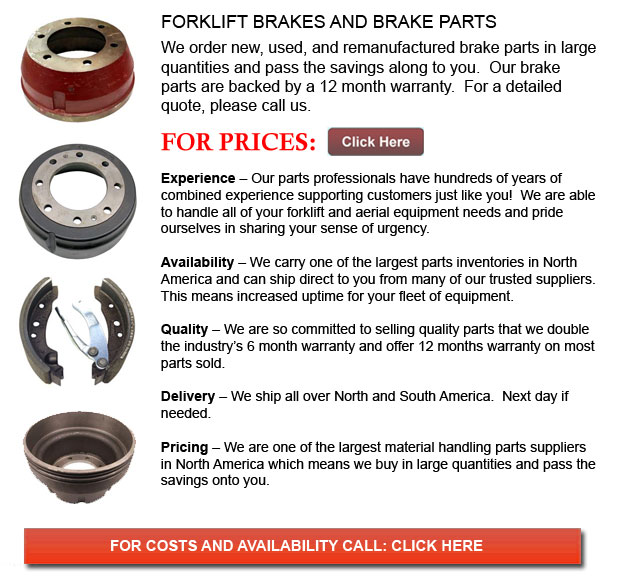
Forklift Brakes - A brake drum is where the friction is supplied by the brake pads or brake shoes. The pads or shoes press up against the rotating brake drum. There are a few various brake drums kinds along with certain specific differences. A "break drum" would generally refer to if either shoes or pads press onto the interior surface of the drum. A "clasp brake" is the term utilized to describe if shoes press next to the outside of the drum. One more kind of brake, called a "band brake" makes use of a flexible band or belt to wrap round the exterior of the drum. If the drum is pinched in between two shoes, it could be known as a "pinch brake drum." Similar to a typical disc brake, these types of brakes are quite rare.
Previous to 1955, early brake drums needed constant modification periodically so as to compensate for shoe and drum wear. "Low pedal" or long brake pedal travel is the dangerous end result if adjustments are not done satisfactorily. The vehicle can become hazardous and the brakes could become useless if low pedal is combined with brake fade.
There are a variety of Self Adjusting Brake Systems available, and they could be categorized within two major kinds, RAI and RAD. RAI systems have built in tools which avoid the systems to be able to recover when the brake is overheating. The most recognized RAI manufacturers are Lucas, Bosch, AP and Bendix. The most famous RAD systems consist of AP, Bendix, Ford recovery systems and Volkswagen, VAG.
The self adjusting brake will typically just engage when the lift truck is reversing into a stop. This method of stopping is acceptable for use whereby all wheels utilize brake drums. Disc brakes are used on the front wheels of vehicles nowadays. By functioning only in reverse it is less possible that the brakes would be adjusted while hot and the brake drums are expanded. If tweaked while hot, "dragging brakes" can take place, which raises fuel expenditure and accelerates wear. A ratchet device which becomes engaged as the hand brake is set is one more way the self adjusting brakes can function. This means is only suitable in functions where rear brake drums are utilized. When the parking or emergency brake actuator lever goes over a specific amount of travel, the ratchet developments an adjuster screw and the brake shoes move in the direction of the drum.
There is a manual adjustment knob placed at the bottom of the drum. It is usually adjusted via a hole on the other side of the wheel and this requires getting beneath the forklift together with a flathead screwdriver. It is of utmost importance to move the click wheel correctly and modify each wheel evenly. If uneven adjustment takes place, the vehicle can pull to one side during heavy braking. The most effective method so as to make certain this tiresome job is done carefully is to either raise each wheel off the ground and spin it by hand while measuring how much force it takes and feeling if the shoes are dragging, or give each one the exact amount of clicks utilizing the hand and then perform a road test.
![]() Click to Download the pdf
Click to Download the pdf
Forklift Parts
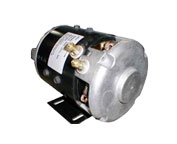
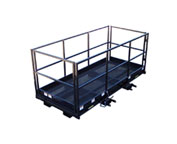
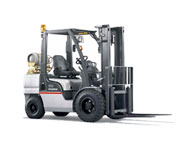
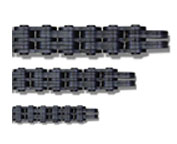
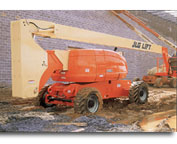
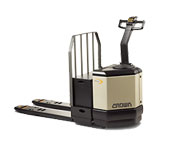
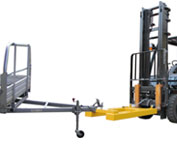
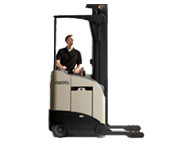
Lift Parts Express
TOLL FREE: 1-888-695-7994
Fall River, Massachusetts
forkliftpartsfallriver.com
Email Us
About Us


